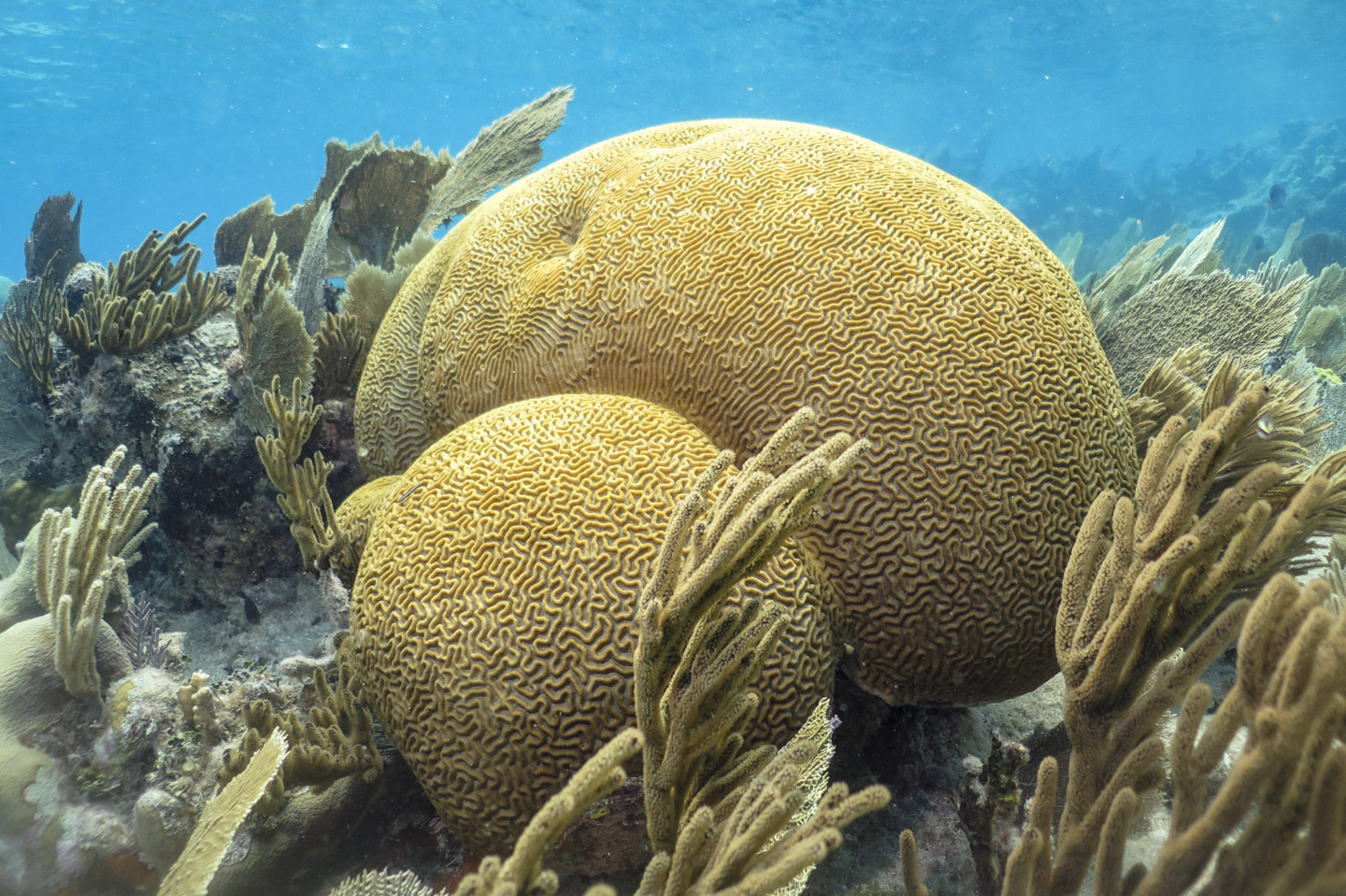Why There is Still Hope for Coral Reefs
The Key Word is “Resilience”
Bleached brain coral (Diploria strigosa) in the Florida Keys
Healthy brain coral in Southern Cuba
We started killing coral reefs in the 1970s – most likely earlier. What is lost in the news about climate change — likely the most serious threat to coral reefs — is the fact that there are many impacts that humans have caused over decades to undermine the health of these magnificent ecosystems. But, believe it or not, in the end, this translates into hope for coral reefs.
Over the years, fertilizers and nutrients from farming, septic tanks and other sources have fueled the growth of algae that can overgrow and smother coral reefs. Meanwhile, overfishing has removed many of the fish that graze upon algae, keeping it in check and coral reefs “clean.” Consequently, many reefs have been overrun by algae, killing them. Human pathogens in sewage have infected corals with disease. It’s a long list.
Today it’s estimated that 80-90% of corals in the Florida Keys have died, dealt a serious blow by this year’s unprecedented warming in July to water temperatures of 100 degrees F. (The year 2023 is the warmest year in recorded history.)
A short distance south, in Cuba, coral reefs also suffered this year, but overall Cuban reefs remain much healthier than most reefs in the Caribbean. A recent study finds that 10 percent of the planet’s coral reefs most likely to survive to the end of the century are in Cuban waters.
Why is Cuba different? The short answer is that Cuban corals have been spared the local impacts, such as nutrient pollution, disease and serious overfishing. There is evidence that a healthy ecosystem has more resilience to the effects of climate change, that is, a better ability to recover from the impacts of climate change and other impacts. I have seen bleached corals in Cuba recover in several months.
So where is the good news I alluded to earlier? While dealing with climate change has been slow, depending on ponderous international cooperation, we have control over local impacts (nutrient pollution, sewage, overfishing, etc.) that impact coral reefs. We can buy living corals time until warming is stabilized. There are limits, of course, but it is a hopeful message that there are things we can do locally to help rescue coral reefs.
I have dedicated 23 years of my career working in Cuba, most of it helping Cuban scientists to study and protect coral reefs. There are valuable lessons to be learned from Cuban coral reef ecosystems and protecting some of the healthiest reefs left on the planet is of paramount importance. Please help Ocean Doctor continue this important work, and remember, there is still hope for coral reefs.
We Need Your Support to Continue This Important Work

David E. Guggenheim, Ph.D.
Founder and President
Thank You for Supporting This Vital Work
To learn more about about Cuba’s coral reefs and why they remain so healthy, my book, The Remarkable Reefs of Cuba: Hopeful Stories From the Ocean Doctor tells that story.





